[Cherries and Wild Cherries: The Genus Prunus East of the
Cascade Mts. of Oregon and Washington]
Chokecherry, Choke Cherry, Common Chokecherry
Prunus virginiana var. melanocarpa
Synonyms: Cerasus demissa var. melanocarpa, Padus melanocarpa, Padus virginiana ssp. melanocarpa, Prunus demissa var. melanocarpa, Prunus demissa var. nuttallii, Prunus melanocarpa, Prunus pinetorum, Prunus virginiana ssp. melanocarpa
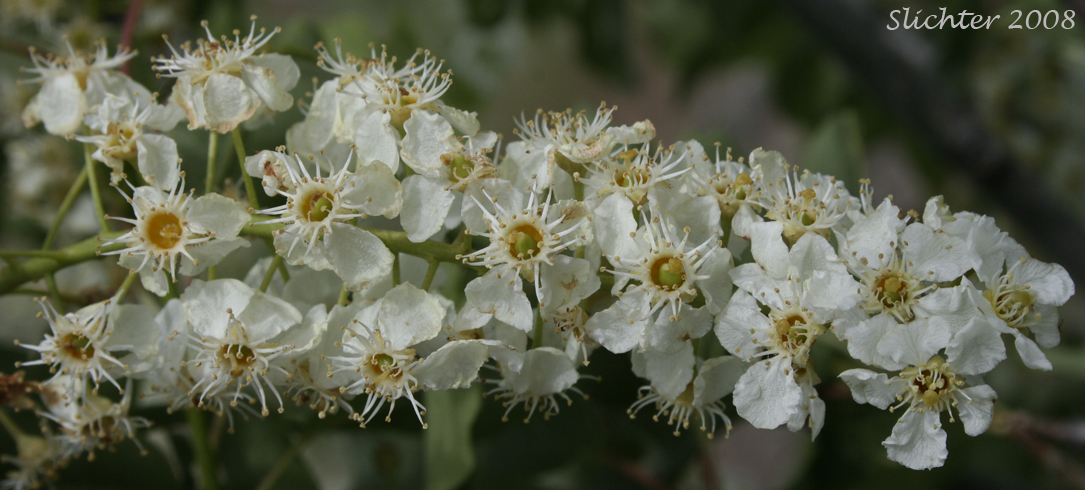
The photo above shows a close-up of a raceme of chokecherry (var. melanocarpa) as seen in scablands along the old state highway about 2 miles west of Fishtrap Lake in eastern Washington.........June 2, 2008.
Characteristics:
Chokecherry is an erect shrub or small tree from 1-4 meters
high. The bark is purplish-gray and the younger twigs are reddish-brown. The
bark lacks lenticels. The leaves are alternate on the stems with elliptic, oblong-ovate,
or obovate blades from 4-10 cm long and petioles 5-15 mm long (with 2 glands
below the leaf base). The tip of the blade is pointed while the base is rounded.
The margins are finely toothed. The upper leaf surface is a shiny dark green
while the lower surface is pale green.
The inflorescence is a terminal, elongated raceme of many flowers.
The calyx of each flower is smooth surfaced with spreading or recurved lobes which
are oval in shape and 1-1.5 mm long. Each of the 5 petals is suborbicular and
4-6 mm in length. There are approximately 25 stamens. The fruit is a red, purple,
or black drupe which is ovoid in shape, 8-11 mm long, and sweet but astringent.
Importance:
The fruits may be used for jellies, syrups, and wines. They
were used fresh or dried and mixed in a pemmican for winter food by the Nez
Perce. The bark was also used as a tea to relieve diarrhea and stomach ailments.
The leaves, pits, and succulent shoots have high levels of cyanide while the
pulp of the fruit is safe to eat. The cyanide levels can be lowered by drying
and cooking. The leaves and twigs are a key mule deer browse, and the fruits
are used by grouse, magpies, rabbits, and bears.
Habitat:
Chokecherry may be found from seacoast headlands to open forests
to arid sagebrush-grasslands. Within those habitats, it likes some moisture,
so is often found near seeps or springs, or along streams.
Range:
Chokecherry may be found from British Columbia south to California
and east to Newfoundland, the Dakotas, Kansas, Missouri, Tennessee, and North
Carolina.
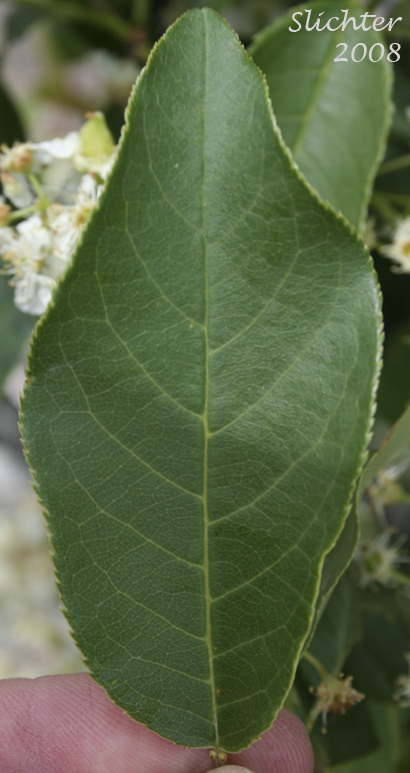 -
- 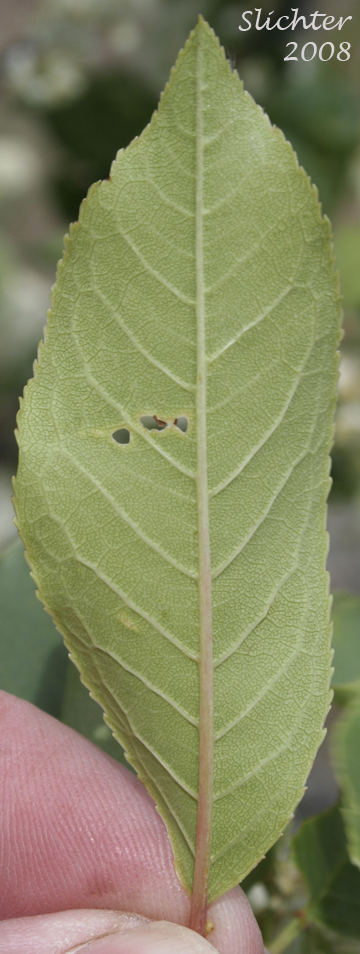
The 2 photos above show close-up views of the dorsal leaf (left) and ventral leaf (right) surfaces of choke cherry (var. melanocarpa) as seen in scablands along the old state highway about 2 miles west of Fishtrap Lake in eastern Washington........June 2, 2008.
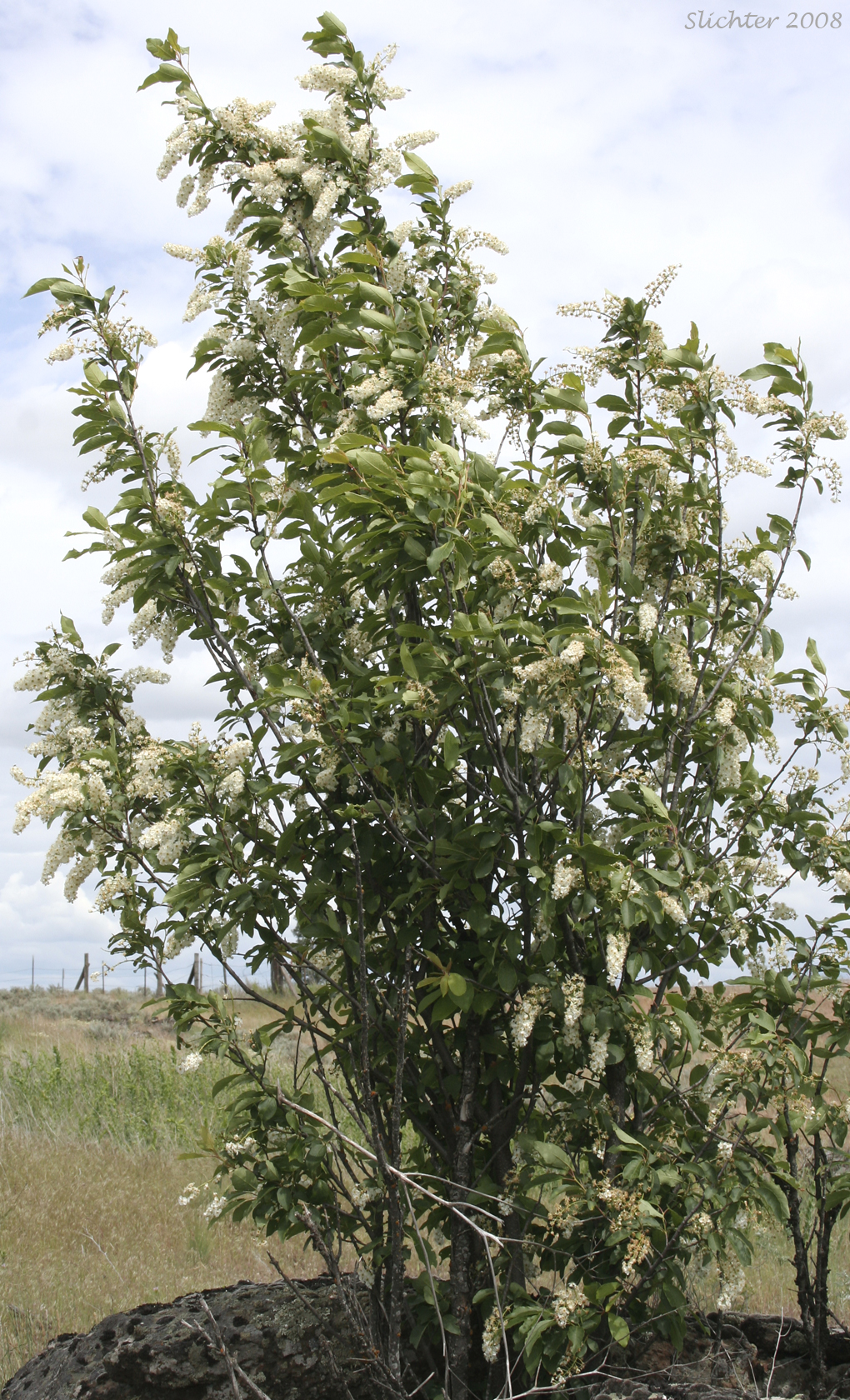
The photo above shows choke cherry (var. melanocarpa) as seen in scablands along the old state highway about 2 miles west of Fishtrap Lake in eastern Washington........June 2, 2008.
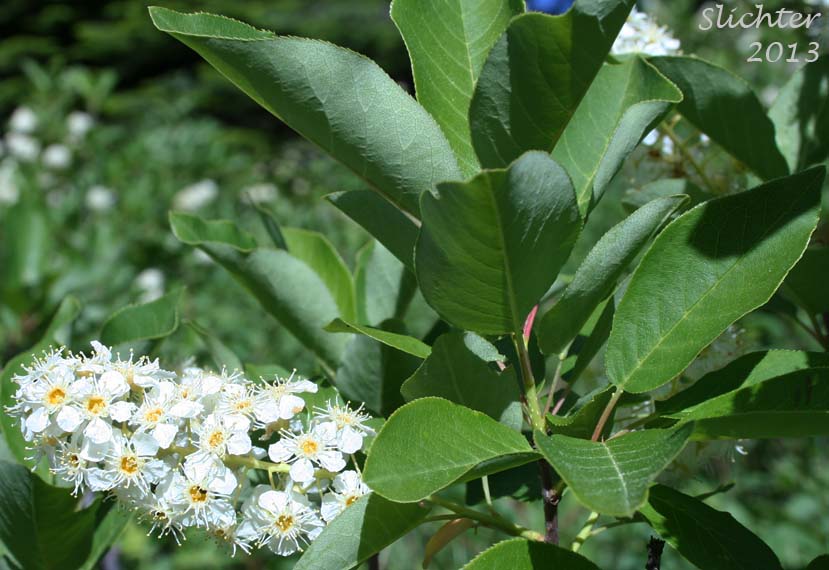 -
- 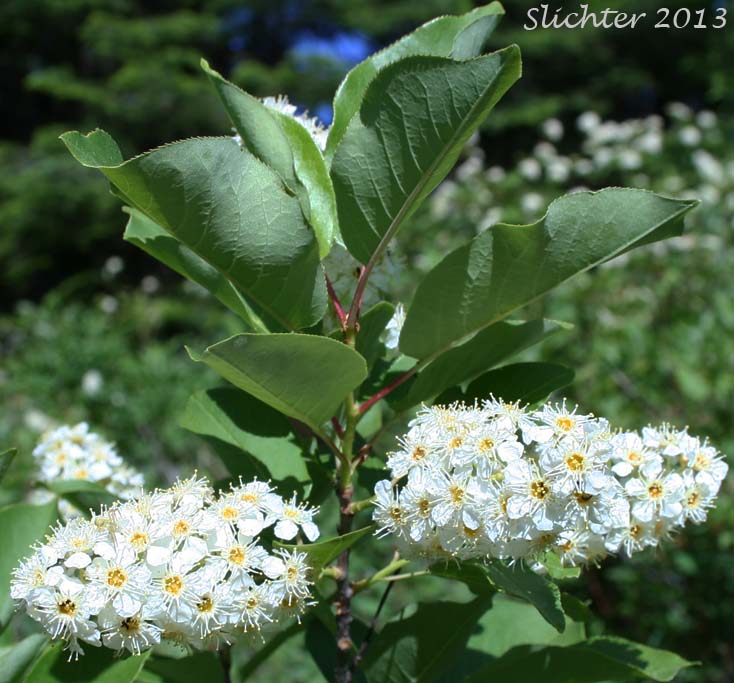
Choke cherry blooming along the eastern boundary of Fields Springs State Park, about one quarter of a mile south of the campground. Asotin County, Washington..........June 11, 2013.
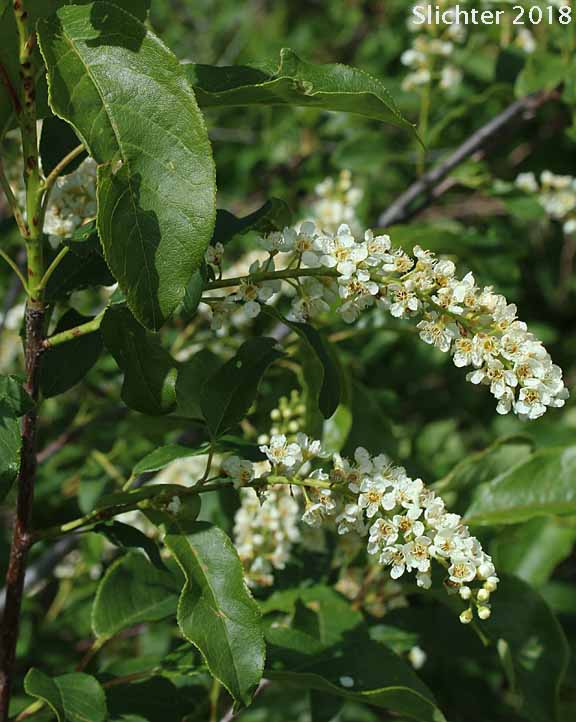 -
- 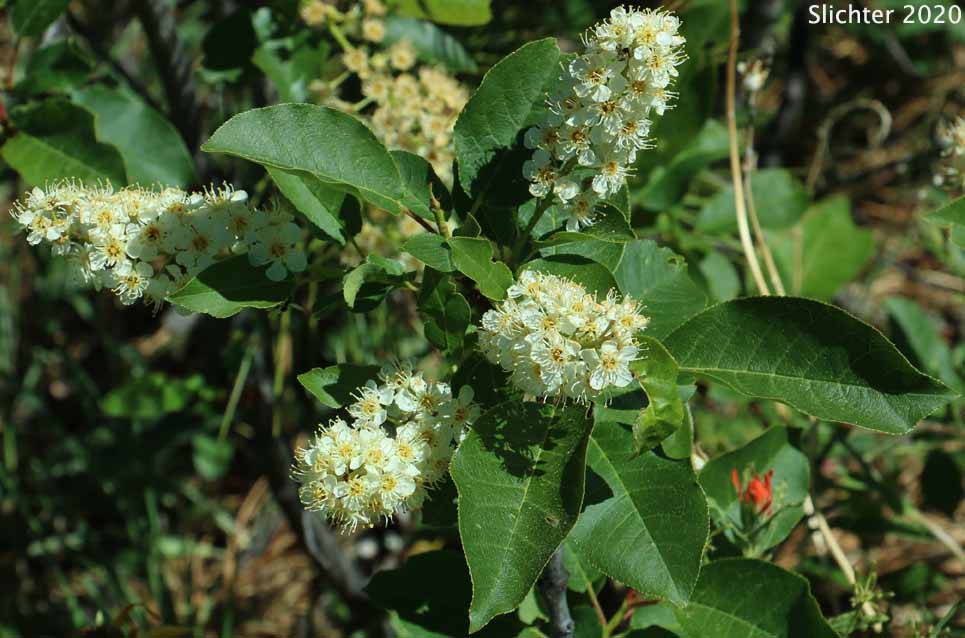
Chokecherry in bloom at left at the Hells Canyon Overlook, Hells Canyon National Recreation Area......June 11, 2018. The photo at right shows chokecherry in bloom along the Fremont National Recreation Trail on the northwest-facing slopes of Hager Mountain, Fremont-Winema National Forest......June 18, 2020.
 -
- 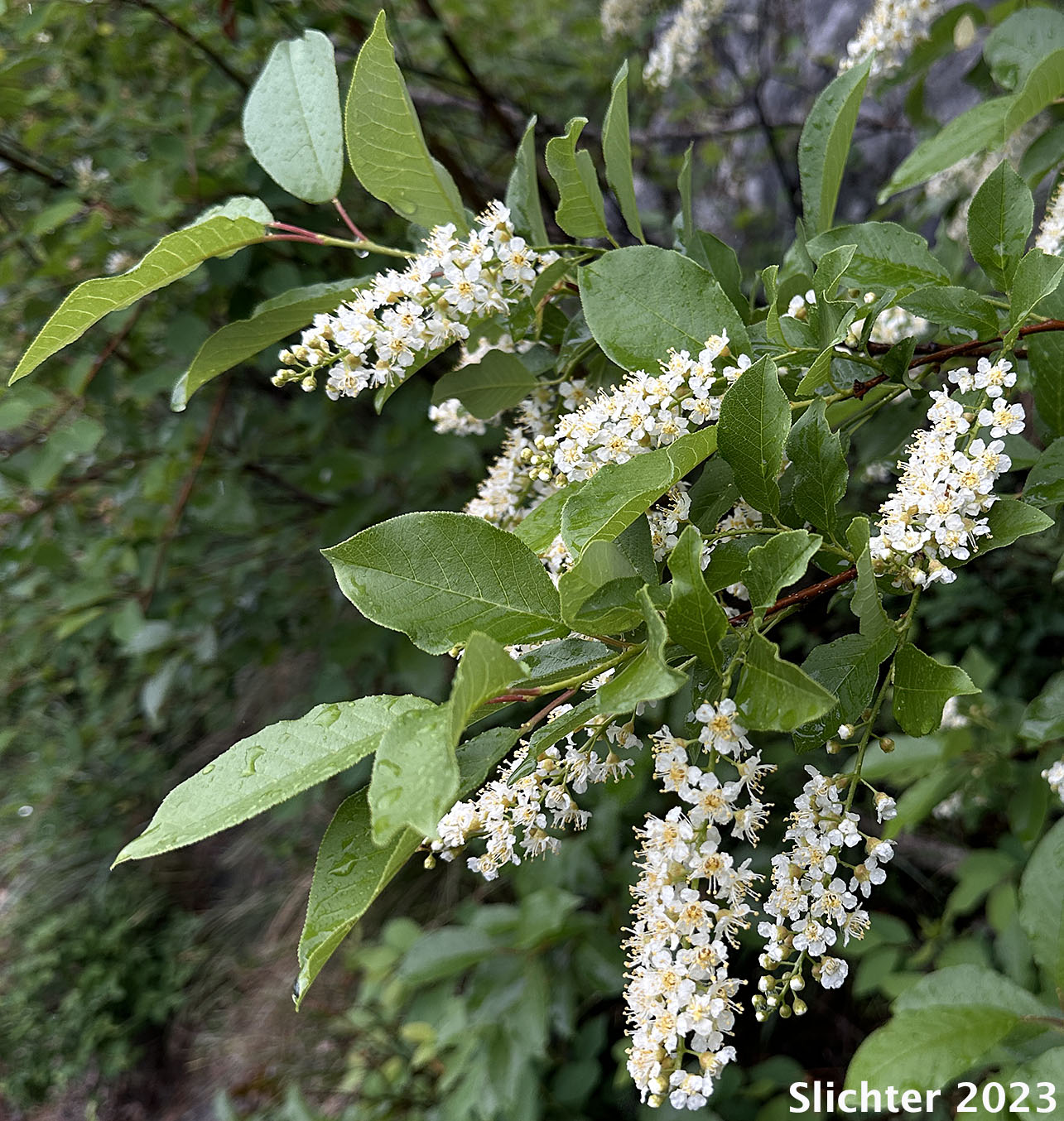
Choke cherry with flower buds as seen at left along Forest Road 2901 about 3-4 miles uphill from Oregon Highway 31, Fremont-Winema National Forest.......April 30, 2017. Choke cherry blooming along the Holland Falls National Recreation Trail #416, Flathead National Forest......May 27, 2023.
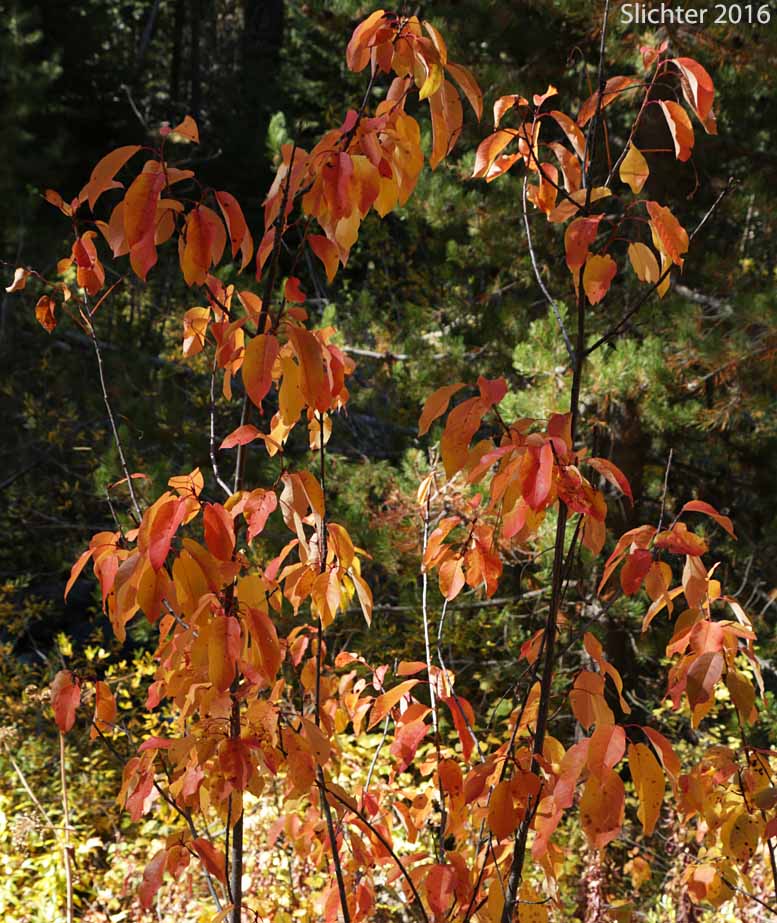 -
- 
Colorful fall foliage of chokecherry as seen along the Ochoco Mt. Trail #283 along Rock Creek about two miles downstream from the trailhead, Ochoco National Forest..........September 27, 2016.
Paul Slichter